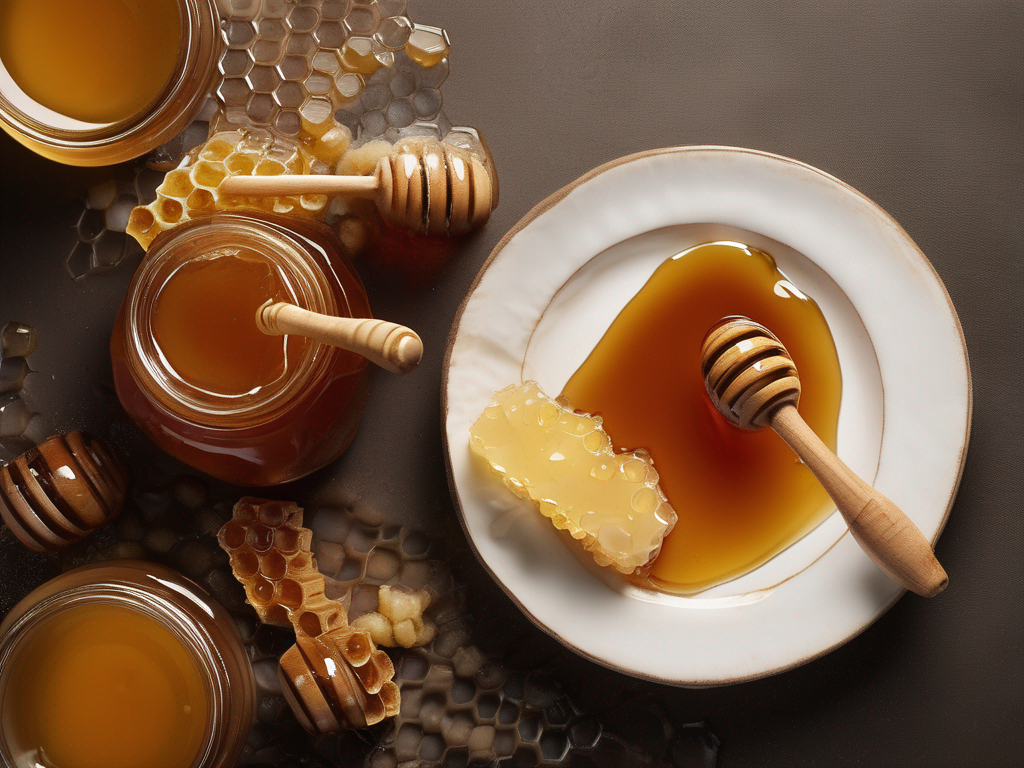
Is Your Honey Still Safe to Eat? A Guide to Recognizing Spoiled Honey
Get Your Free Food Safety Cheat Sheet
30 most common foods with instant answers. Print it and stick it on your fridge—completely free!
Is Your Honey Still Safe to Eat? A Guide to Recognizing Spoiled Honey
Honey is a delicious and versatile natural sweetener that has been enjoyed by humans for thousands of years. Not only is honey a tasty addition to many dishes and beverages, but it also offers numerous health benefits due to its antioxidant and antibacterial properties. However, like any food product, honey can spoil over time, leading to potential health risks. In this blog post, we will explore how to tell if honey has gone bad and is no longer safe to eat. (Honey)
Understanding the Shelf Life of Honey
Honey is known for its long shelf life, thanks to its low water content and high acidity, which create an inhospitable environment for bacteria and other microorganisms. When stored properly in a sealed container at room temperature, honey can remain safe to eat for an indefinite period. However, certain factors can cause honey to spoil or degrade over time:
Factors that Can Cause Honey to Spoil:
- Exposure to Moisture: Honey can absorb moisture from the environment, leading to fermentation and spoilage.
- Exposure to Light: Ultraviolet light can break down the beneficial compounds in honey and cause it to deteriorate.
- Presence of Contaminants: If foreign substances like food particles or mold spores contaminate honey, it can spoil.
- Incorrect Storage: Storing honey in a humid or warm environment can accelerate its deterioration.
Signs that Your Honey Has Gone Bad
While honey does not typically harbor harmful bacteria, it can still spoil under certain conditions. Here are some signs to look out for to determine if your honey has gone bad:
Visual Inspection:
- Presence of Mold: If you see any mold growth on the surface of the honey, it is no longer safe to eat.
- Unusual Texture: If the honey appears crystallized, gritty, or has an unusual texture, it may have started to spoil.
- Darkening or Discoloration: Honey that has darkened significantly or developed off-colors may be spoiled.
Smell and Taste:
- Off Odor: Spoiled honey may have a fermented or sour smell instead of its usual sweet aroma.
- Off Flavor: If the honey tastes sour, fermented, or unpleasant, it is best to discard it.
Other Indications:
- Presence of Foam or Bubbles: If you notice foam or bubbles forming on the surface of the honey, it could be a sign of fermentation.
- Unexplained Illness: If you experience symptoms like nausea, vomiting, or diarrhea after consuming honey, it may have been contaminated or spoiled.
Tips for Storing Honey Safely
To ensure that your honey stays fresh and safe for consumption, follow these storage tips:
- Keep It Sealed: Always store honey in a tightly sealed container to prevent moisture absorption and contamination.
- Avoid Direct Sunlight: Store honey in a cool, dark place away from direct sunlight to preserve its quality.
- Check the Container: Inspect the honey container for any signs of damage or leaks that could compromise its safety.
- Use Clean Utensils: When scooping honey out of the container, use clean and dry utensils to prevent contamination.
Conclusion
Honey is a delicious and nutritious food that can enhance a variety of dishes and beverages. By understanding the signs of spoiled honey and following proper storage practices, you can enjoy this natural sweetener safely. Remember to conduct regular visual inspections, smell tests, and taste tests to ensure that your honey is still fresh and free from spoilage. If in doubt, it is always best to err on the side of caution and discard honey that shows any signs of spoilage. By practicing food safety and proper storage techniques, you can continue to enjoy the many benefits of this golden elixir without any health concerns.
Remember, honey is a precious gift from nature – let's savor it responsibly! (Honey)
Authoritative Food Safety References
These agencies and university labs inform every tip and health precaution we publish.
USDA FoodKeeper – Cold Storage Guidelines
Official refrigerator, freezer, and pantry timelines maintained by the U.S. Department of Agriculture.
Visit USDA FoodKeeperFDA Produce Safety Rule & Grower Guidance
Field-to-fridge handling practices that prevent contamination of fruits, vegetables, and leafy greens.
Visit FDA Produce SafetyCDC Foodborne Illness Prevention Hub
Surveillance-backed guidance on pathogens, symptoms, and steps to reduce foodborne illness risk.
Visit CDC Food SafetyUC Davis Postharvest Technology Center
University research detailing optimal storage atmospheres for produce after harvest.
Visit UC Davis PostharvestPenn State Extension – Home Food Preservation & Safety
Peer-reviewed extension bulletins on safe canning, chilling, and reheating practices.
Visit Penn State ExtensionGet Your Free Food Safety Cheat Sheet
30 most common foods with instant answers. Print it and stick it on your fridge—completely free! Want more? Upgrade to the complete guide with 70+ foods.
Scan your food directly and get instant safety info using our AI-powered camera feature.